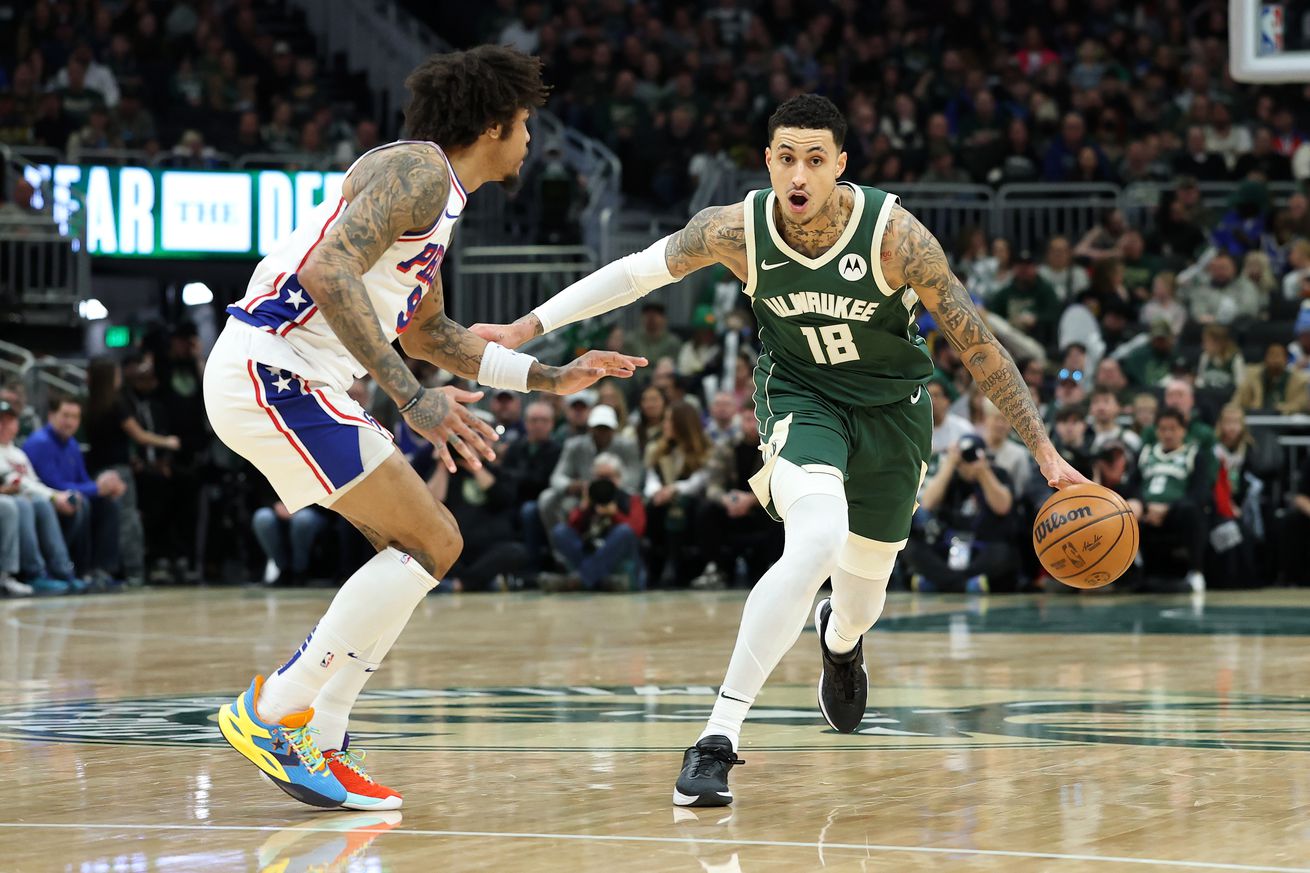
This one comes from San Antonio, and it probably won’t convey.
In the wake of the NBA’s trade deadline last week, many moves were wrapped up into other transactions as the involved teams wheeled and dealt (dealed?) with other rivals. Two-team trades became three-teamers, three-teamers became four-teamers, and so on. The Bucks’ swap of Khris Middleton to the Wizards for Kyle Kuzma was the headline grabber, but it ended up also including two other teams (the Knicks and Spurs), a few other players, some cash, and some draft picks. That last bit is of particular importance to Milwaukee, who went from having just two tradeable future picks unencumbered by swaps to having four (after the 2025 NBA draft, they’ll have five).
This is essentially how the trade looks from Milwaukee’s perspective. For Khris Middleton, AJ Johnson, Delon Wright, the rights to Hugo Besson, a 2028 first-round pick swap, and cash, the Bucks acquired Kuzma, Jericho Sims, and not one, but two second-round picks. One of them, which was reported in the immediate aftermath of the deal, will be the second-most favorable of the Pistons’, Suns’, or Warriors’ in the 2025 draft. That came from Washington.
We also found out upon the trade’s finalization that Milwaukee also received a protected second-round pick from San Antonio in 2026. Technically, the Spurs had to send something out to be a part of the trade when they received UWM alum Patrick Baldwin Jr. San Antonio controls five second-rounders that season: their own plus four that could come from a variety of teams (four of these eight: OKC/Dallas/Philly, Indiana/Miami, New Orleans/Portland, Utah) depending on swaps.
So one of those is heading to Milwaukee, but we don’t yet know which one. The pick is protected; no word on how protected, but top-55 is likely. That means if it’s not one of the last five picks in the 2026 draft, San Antonio will keep it, and while Milwaukee could trade it anytime before then, it doesn’t have much value.
In terms of cash, the Bucks gave up quite a bit: $1m went to the Wizards, $2m went to the Knicks, and $4.1m went to the Spurs. As we previously reported, sending away cash in a trade hard-caps teams at the second apron, but not to worry: with all these moves, the Bucks have about $3.1m in space beneath it. They also created a roster opening by trading away three players and taking back two in return, but since they didn’t dip below the NBA’s roster minimum of 14, they’re under no obligation to fill it at all.
But fill it they will. That $3.1m would give them plenty of room for a prorated minimum salary to cover Ryan Rollins for the rest of the season if his two-way contract is converted. At 36 games played plus another eight games active, Rollins is nearing his 50-game two-way limit and is on pace to hit it by the end of February. The exact dollar value of a prorated veteran’s minimum (which is what Rollins would receive, having three years of experience) depends on the date it’s signed. At this point, it would be a fair bit less than a million bucks.
Milwaukee could convert Rollins and still create another opening for a buyout player by waiving, say, Chris Livingston. While they would still be on the hook for Livingston’s salary unless he is claimed, they’d have over $2m for another rest-of-season prorated minimum or even a ten-day contract, which costs much less. As a reminder, since the Bucks are far over the first apron and have no real means to get under it now that the deadline has passed, they are forbidden from signing a waived player whose pre-waiver salary exceeded the $12.4m non-taxpayer mid-level exception.
It was also initially reported that the Bucks would receive the rights to Mathias Lesort in the deal, drafted 50th overall in 2017, but apparently, those rights are headed to the Knicks.